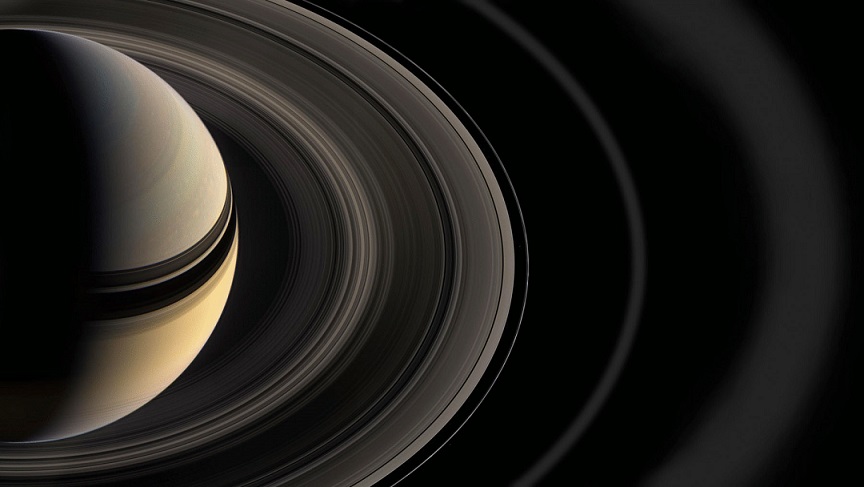How much time is left before Saturn loses its rings?
Contrary to a widespread belief, Saturn wasn’t born with its famous rings. They are relatively young by cosmic standards – between 10 and 100 million years – compared to the planet’s age of around 5.4 billion years.
And they surely aren’t there forever – scientists estimate the inner rings will gradually disappear within a few hundred million years while the farthest ones will stay longer.
Modern time astronomers suspected that the saturnian rings would not survive the planet’s strong pull wince the 1980s and received the first evidence only in 2017, when NASA’s Cassini spacecraft sent home data showing huge amounts of ring materials dropping onto Saturn in the form of rain.

Saturn's rings photographed by the Cassini spacecraft in 2012. Image: NASA
Made out of rocky and water ice particles spiced with carbon and other compounds, the rings were formed from the debris of comets, asteroids, and moons that got attracted by the gravity of Saturn, which consists mainly of hydrogen and helium around a dense core of metals like iron and nickel, coated with a rocky stratum.
To answer the question exactly how much time is left before the innermost rings disappear, NASA has deployed the powerful James Webb Space Telescope to investigate the issue. The effort is backed up by researchers at the Japan Aerospace Exploration Agency (JAXA), who will use the Keck Telescope in Hawaii. Finally, the UK’s University of Reading’s Department of Meteorology has joined the quest to solve the mystery.
“We’re still trying to figure out exactly how fast they are eroding," said Dr. James O’Donoghue, a scientist who worked for NASA and JAXA, in a statement published by University of Reading. “Currently, research suggests the rings will only be part of Saturn for another few hundred million years. This may sound like a long time, but in the history of the universe this is a relatively quick death. We could be very lucky to be around at a time when the rings exist.”
O'Donoghue and his team are hoping to make long-term observations to monitor how the trend fluctuates over time, what is the role of the atmosphere, and other factors. According to the researcher, the Sun's radiation during Saturn's 29.5-year orbit influences how much material falls toward the planet: when the rings are edge-on with our star, the ring rain slows down and when they are tilted to face the star, the ring rain influx increases.
Humans are lucky to evolve just in time to see the rings before they vanish for good, he told Space.com.
Another puzzle the O'Donoghue team wants to solve is why the atmospheric temperatures on Saturn are around 200 degrees Celsius, given that the planet receives less than 4% of the sunlight captured by Earth. Where the heat comes from if the Sun is not the main source of heating.
As Jupiter is similar by composition to Saturn, answering the questions about the latter will shed light about the largest planet of the Solar System too.







